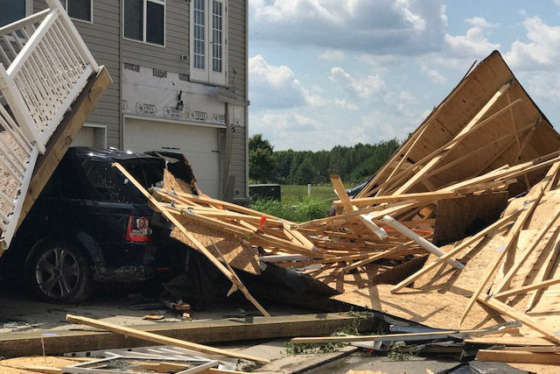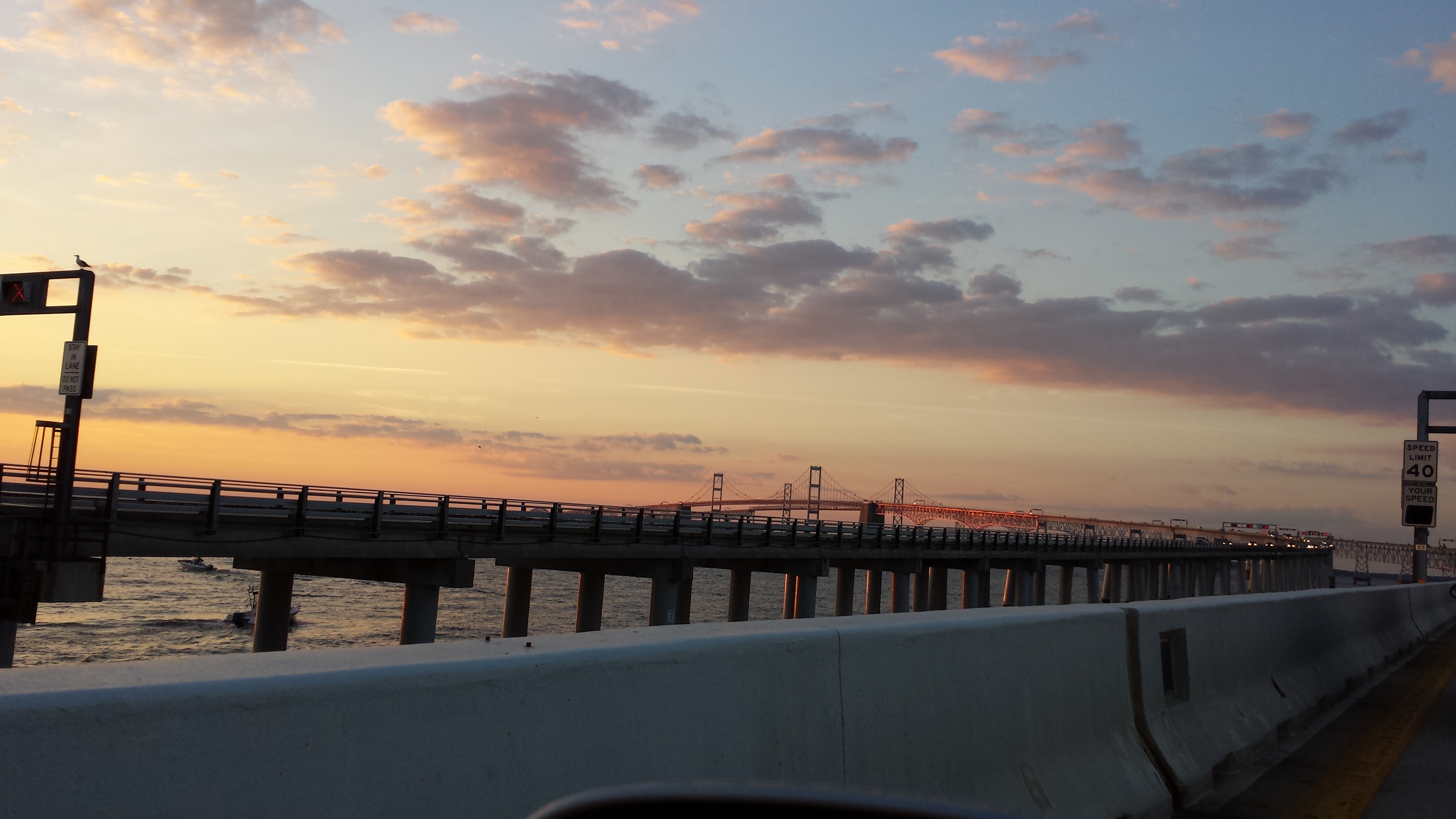WASHINGTON — The violent storm that roared across the Chesapeake Bay early Monday morning, spawning a tornado that severely damaged homes in Stevensville, Maryland, forced an unusually long shutdown at the Bay Bridge — nearly an hour and a half.
Wind speed is the determining factor in the decision on whether to close the four-mile bridge to traffic.
“When we have a storm of this magnitude come through, it is definitely the wind that leads us to the decisions that we make,” said Kerry Brandt, deputy director of communications for the Maryland Transportation Authority.
The severe weather triggered the authority’s top threshold for closing the bridge — sustained winds greater than 55 mph for at least 10 minutes, or gusting winds greater than 55 mph for at least 15 minutes.
“Certainly, any type of full restriction or bridge closure definitely does not occur on a regular basis,” Brandt said.
Anemometers affixed to the bridge provide wind speed data, and the Transportation Authority coordinates with law enforcement on decisions to limit or restrict traffic.
“When we see the winds pick up, we will take the necessary precautions,” Brandt said.
Sustained winds up to 39 mph produce caution advisories to drivers with house and box trailers, motorcycles and vehicles equipped with roof-mounted racks.
Such vehicles can be prohibited from crossing when winds reach up to 49 mph.
Full wind restrictions kick in when winds top 50 mph, limiting crossings to certain vehicles including cars, pickup trucks, flatbed trailers and heavy-laden tractor/trailers.
The bridge is closed to all traffic when winds exceed 55 mph.
Crossing the Chesapeake Bay on the long, tall bridge has been known to touch off anxiety among some people even when the weather is fine, let alone during a severe storm.
“We did not have any complaints earlier this morning [upon the closure of the bridge], when people understood the ferocity of this storm,” Brandt said.
How often does the bridge close?
This was the eighth time the bridge has been closed for high winds.
Hurricane Sandy was responsible for the longest recorded closure of the Chesapeake Bay Bridge. The bridge was off-limits for more than18 hours from 2:49 p.m. Oct. 29, 2012 to 9:04 a.m. on Oct. 30 in 2012. Traffic was prohibited from crossing the bridge during three windy thunderstorms earlier that year, including the June derecho.
The bridge also closed on Aug. 27, 2011 during Hurricane Irene and for nearly 17 hours during Hurricane Isabel in September 2003. A Category 2 storm at landfall, Isabel produced a prolonged period of tropical storm force winds above the Chesapeake Bay and left much of Kent Island under water.
Protect yourself
The tornado that severely damaged homes and knocked out power on Kent Island early Monday morning injured just one person, even though tornadoes are nature’s most violent storms.
To stay safe in a tornado, people are urged to seek shelter in a safe room, such as a basement. Experts also recommend wearing sturdy shoes during a tornado.
Those who are on roads or highways when a tornado strikes should not look for safety under an overpass or bridge.
Vital tips for surviving a tornado are on the Federal Emergency Management Agency’s website.
WTOP’s Dave Dildine contributed to this story.









